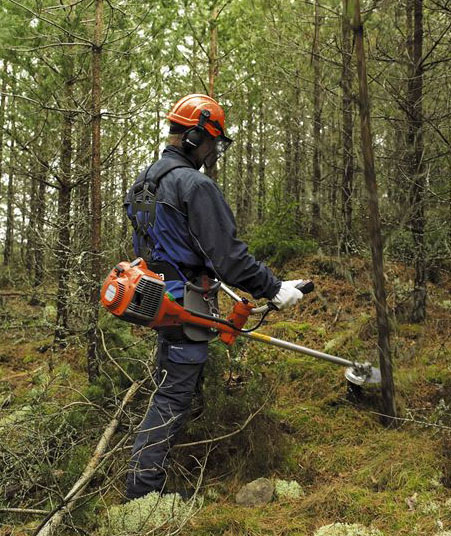Chainsaws are powerful tools that can make cutting tasks more efficient, but with that power comes the responsibility of using them safely. Improper handling of chainsaws can result in serious injuries or even fatalities. That’s why chainsaw safety training is essential for anyone who operates these tools, whether in forestry, construction, or other industries. In this article, we will discuss the importance of chainsaw safety training, key safety practices, and how proper training can prevent accidents and improve productivity.

Why Chainsaw Safety Training Is Essential 🛡️
Chainsaw accidents are all too common. According to the Occupational Safety and Health Administration (OSHA), chainsaw operators face risks such as kickback, falling debris, and accidental cuts. Without proper safety training, even seasoned workers can make mistakes that lead to injuries.
Chainsaw safety training ensures that operators understand the inherent dangers of the tool and how to mitigate them. It teaches workers the proper techniques, best practices, and safety measures that reduce the risk of accidents. More than just compliance, this training fosters a culture of safety and awareness, promoting a safer working environment for everyone involved.
Key Components of Chainsaw Safety Training 🧑🏫
A thorough chainsaw safety training program should cover several important areas to ensure workers are fully prepared to operate chainsaws safely:
1. Chainsaw Parts and Functionality 🔧
Before even starting a chainsaw, it's important to understand its components and how they function. Chainsaw training should cover key parts like:
- The Chain: Understanding the sharpness and tension of the chain is crucial for smooth operation.
- Throttle and Chain Brake: Knowing when and how to engage the throttle and chain brake ensures control during operation.
- Safety Features: Modern chainsaws come with several safety features like chain brakes, handguards, and vibration reduction systems, which should be regularly checked and maintained.
2. Proper Handling and Stance 🏞️
One of the main focuses of chainsaw safety training is teaching workers the correct posture and stance while using a chainsaw. Proper handling ensures better control and reduces the likelihood of accidents, such as:
- Grip: Holding the chainsaw with both hands firmly is essential to maintain control.
- Foot Position: Keeping your feet stable and well-placed can prevent you from slipping or losing balance.
- Body Position: Operators should stand in a stable position with knees slightly bent to absorb shock and maintain balance.
3. Safe Starting Procedures 🔌
The method of starting a chainsaw is critical. Operators need to know how to start the chainsaw safely, ensuring that:
- The saw is on a stable surface: Never start a chainsaw on an uneven surface.
- Throttle is not engaged: Ensure the throttle is not engaged when starting to prevent a sudden jolt.
- Proper use of a starting handle: Correctly using the starting handle avoids injury and strain.
4. Preventing Kickback ⚠️
Kickback is one of the most dangerous hazards when operating a chainsaw. It occurs when the chainsaw's chain unexpectedly jerks backward toward the user. To avoid kickback:
- Maintain proper chain tension: An overly loose or tight chain increases the risk of kickback.
- Position the saw correctly: Keep the chainsaw at the correct angle when cutting, especially when cutting large limbs.
- Always use the chain brake: Engage the chain brake immediately when stopping or pausing cutting tasks to prevent accidental movement.
5. Proper Maintenance and Inspections 🔍
Chainsaw safety training also emphasizes the importance of regular maintenance to ensure the chainsaw operates properly. This includes:
- Chain maintenance: Sharpening the chain regularly and adjusting its tension.
- Fuel and oil checks: Properly fueling and lubricating the chainsaw to ensure smooth operation.
- General inspection: Before using the saw, always check for any damage to parts like the throttle, chain, and safety mechanisms.
6. Personal Protective Equipment (PPE) 🧰
Wearing the right personal protective equipment (PPE) is another key component of chainsaw safety training. PPE includes:
- Chainsaw protective pants: These are designed to protect the lower body from chain contact.
- Protective gloves: To ensure a solid grip and protect the hands.
- Helmet with face shield or goggles: Protecting the head and eyes from falling debris.
- Ear protection: Chainsaws can generate loud noise that may cause hearing damage, so ear protection is essential.
- Steel-toed boots: Protects the feet from falling logs or branches.
The Benefits of Chainsaw Safety Training 🌟
By investing in chainsaw safety training, you are taking proactive steps toward a safer and more productive work environment. The benefits include:
- Reduced Risk of Injury: Proper training significantly reduces the chances of accidents and injuries, saving lives and preventing costly medical bills.
- Improved Productivity: When workers feel confident in their ability to use a chainsaw safely, they can work more efficiently, improving overall productivity.
- Compliance with Regulations: Chainsaw safety training ensures that your team complies with industry regulations, helping to avoid fines and legal issues.
- Enhanced Safety Culture: A well-trained team is more likely to follow safety protocols, creating a culture of safety throughout the organization.

Why Choose Southbrook Safety & Consulting Ltd. for Chainsaw Safety Training? 🌟
At Southbrook Safety & Consulting Ltd., we specialize in delivering high-quality, hands-on chainsaw safety training that is tailored to your industry’s needs. Our experienced instructors provide practical training that equips your team with the skills and knowledge needed to handle chainsaws safely. Whether you prefer in-person sessions or online courses, we offer flexible options that suit your schedule and workforce requirements.
By choosing Southbrook Safety & Consulting Ltd., you are not just investing in compliance, but in the overall safety and productivity of your workplace. Don’t wait for an accident to happen—train your team today for a safer tomorrow!
Business Website: https://southbrooksafety.com/
Business Phone: 780-983-3426
Business Address: 2325 Bailey Ct SW Edmonton, AB T6W 1H9, Canada






Comments